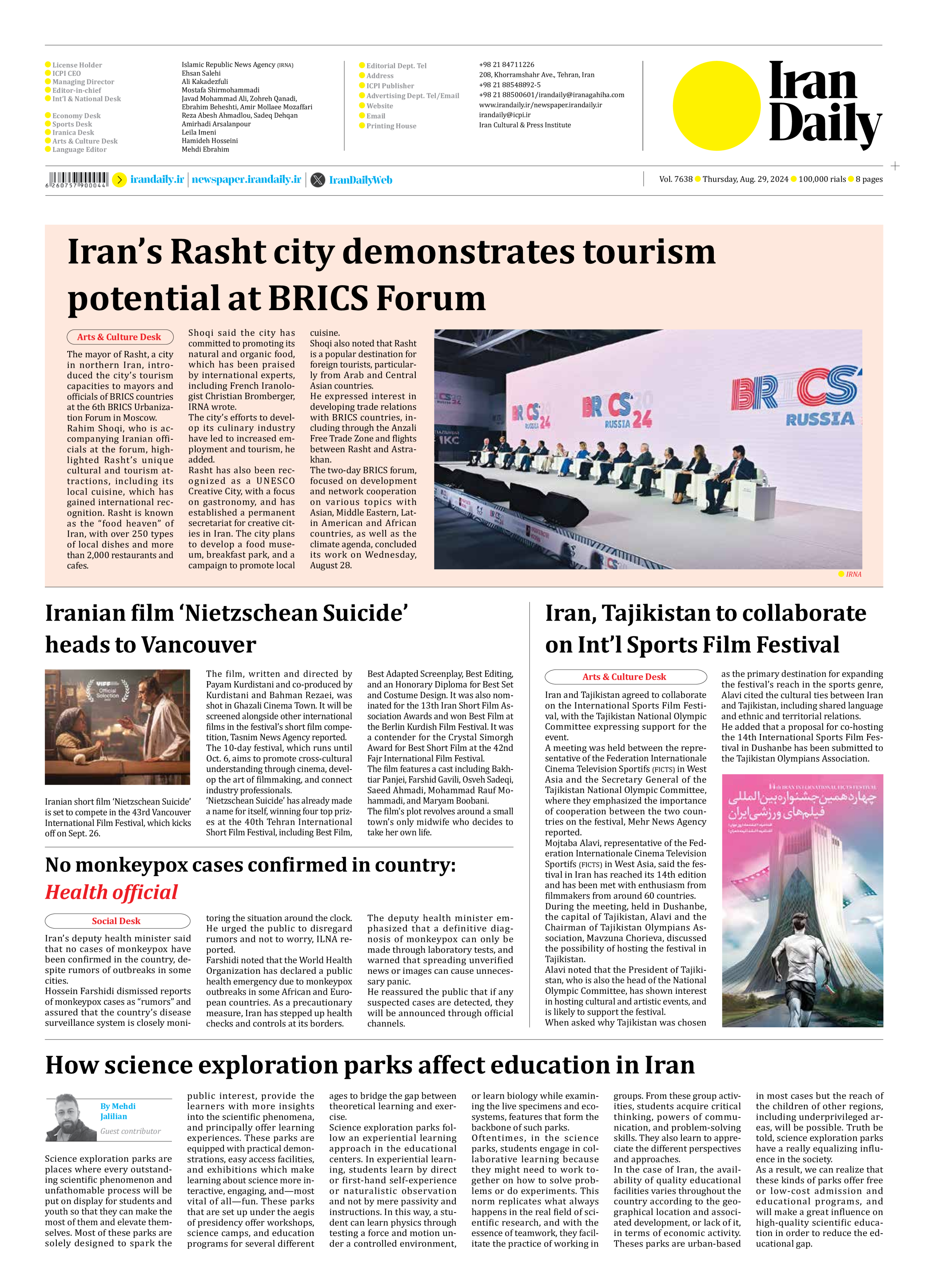
How science exploration parks affect education in Iran
By Mehdi Jalilian
Guest contributor
Science exploration parks are places where every outstanding scientific phenomenon and unfathomable process will be put on display for students and youth so that they can make the most of them and elevate themselves. Most of these parks are solely designed to spark the public interest, provide the learners with more insights into the scientific phenomena, and principally offer learning experiences. These parks are equipped with practical demonstrations, easy access facilities, and exhibitions which make learning about science more interactive, engaging, and—most vital of all—fun. These parks that are set up under the aegis of presidency offer workshops, science camps, and education programs for several different ages to bridge the gap between theoretical learning and exercise.
Science exploration parks follow an experiential learning approach in the educational centers. In experiential learning, students learn by direct or first-hand self-experience or naturalistic observation and not by mere passivity and instructions. In this way, a student can learn physics through testing a force and motion under a controlled environment, or learn biology while examining the live specimens and ecosystems, features that form the backbone of such parks.
Oftentimes, in the science parks, students engage in collaborative learning because they might need to work together on how to solve problems or do experiments. This norm replicates what always happens in the real field of scientific research, and with the essence of teamwork, they facilitate the practice of working in groups. From these group activities, students acquire critical thinking, powers of communication, and problem-solving skills. They also learn to appreciate the different perspectives and approaches.
In the case of Iran, the availability of quality educational facilities varies throughout the country according to the geographical location and associated development, or lack of it, in terms of economic activity. Theses parks are urban-based in most cases but the reach of the children of other regions, including underprivileged areas, will be possible. Truth be told, science exploration parks have a really equalizing influence in the society.
As a result, we can realize that these kinds of parks offer free or low-cost admission and educational programs, and will make a great influence on high-quality scientific education in order to reduce the educational gap.







